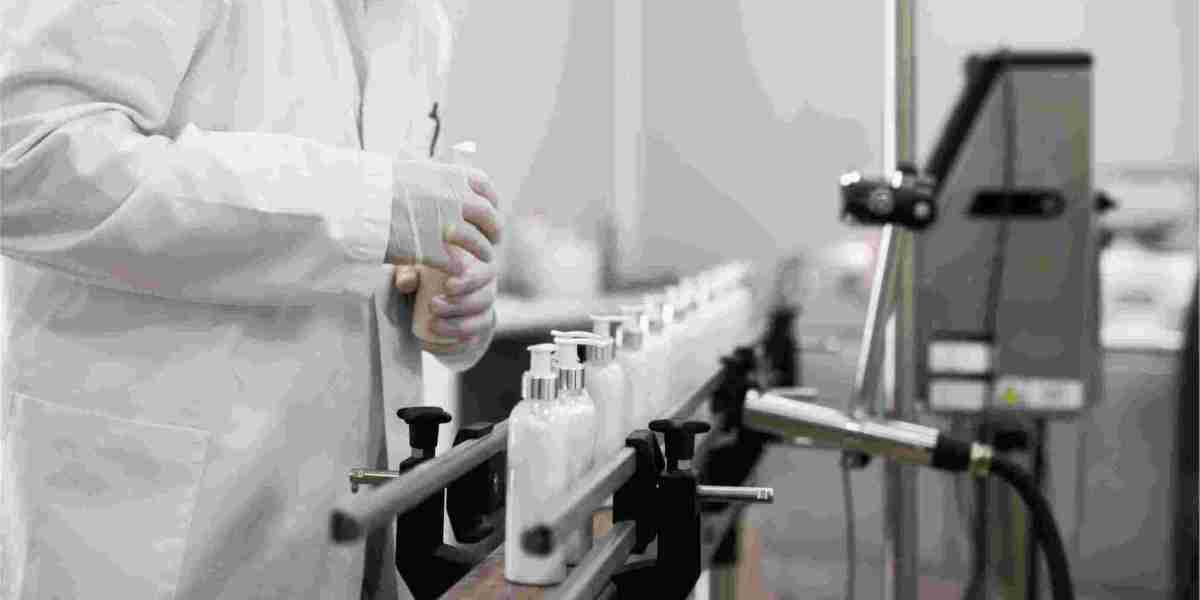So far, a total of 15 ADC drugs have been approved worldwide, of which the FDA has approved 13 ADCs for various cancers, including Adcetris®, Kadcyla®, Besponsa®, Mylotarg®, Lumoxiti®, Polivy®, Padcev®, Enhertu ®, Trodelvy® and Blenrep®. As more and more ADCs enter clinical trials, the industry is gradually shifting from the use of traditional technologies to the use of newer, more robust methods to connect such complex biomolecules, including strategies using new target antigens, more powerful payloads, new linkers, and advanced coupling technologies.
As a combination of macromolecules and small molecules, ADC brings certain challenges to CMC supervision due to its complex structural characteristics and production process. Currently, there are no specific guidelines for the CMC part of ADC products. In the United States, sponsors submit ADC listing applications through BLA, but ADCs are regulated by CDER. The CMC review of ADC products involves two departments: Office of Biotechnology Products (OBP) and Office of New Drug Quality Assessment (ONDQA). Among them, OBP is responsible for the review of ADC antibodies, and ONDQA is responsible for the review of ADC payload and payload-linker intermediate. OBP and ONDQA jointly review the DS and DP of ADC under the leadership of a reviewer. Therefore, the CTD module 3 needs to reflect the production process and overall quality control of the ADC antibodies, payload-linker intermediate, and drug substance (DS) and drug product (DP). In addition, there is currently no unified CMC declaration format for ADC products in the world, and sponsors cannot create globally applicable documents.
Monoclonal Antibody (mAb)
Regulatory requirements for ADC antibody intermediates and their use as final DS are consistent, and comparable studies between preclinical materials and clinical materials should be conducted in terms of characterization and quality control. Characterization of mAb intermediates includes primary structure (amino acid sequence, N-terminal/C-terminal sequence analysis, peptide map), secondary or tertiary structure, protein fragments/aggregates, and charge variants, glycosylation modification, post-translational modification, target binding properties and biological activity, etc. In addition, the mAb's effector function and binding to Fcγ receptor (FcgR) and neonatal Fc receptor (FcRn) should also be characterized, and the impact of mAb intermediates on target cell signal transduction should be evaluated.
Currently, most ADC products use lgG1 or lgG4 antibodies. The effector function and biological activity of the antibody are closely related to the MOA of the ADC and should be characterized. Antibodies modified to reduce effector function or reduce the formation of IgG4 half-antibodies require further characterization. In addition, antibody impurities need to be identified and characterized, including product-related impurities (dimers, multimers, degradation products, etc.) and process-related impurities (bacteria, endotoxins, HCPs, host cell DNA, etc.). If the impurity is present, its biological activity needs to be characterized and its potential impact on the in vivo activity of the ADC needs to be understood. If the antibody is modified, comparability studies are required. Appropriate methods should be used to conduct comparability studies on toxicological batches, clinical batches, and commercial batches.
Payload-Linker Intermediate
Regulatory requirements for payload-linker intermediates and final DS are the same. The main considerations include optical chirality, polymorphism, impurities (product-related, process-related, free drugs and related substances, residual solvents, heavy metals), biological activity (target specific binding, affinity, effector function) and potency. Typically, payload and linker are considered starting materials, and intermediates are combinations of the two. The source of starting materials needs to be determined, that is, toxin sources, fermentation sources (such as microbial strains), semi-synthetic compounds resulting from structural modification of natural products, peptides and chemically synthesized compounds. The selection of ADC starting materials is usually discussed with the FDA at the EOP2 meeting.
In addition, the payload/linker/payload-linker should be structurally characterized (UV, IR, NMR, mass spectrometry, elemental analysis, etc.) and stability methods indicating purity should be verified to determine the impurity profile. Likewise, impurities generated during the payload-linker coupling process should also be analyzed. Processes for reducing or removing impurities must be specified and the presence of impurities characterized through method validation. The FDA recommends characterizing the impurities in the payload-linker intermediate and conducting structural identification of individual impurities at levels greater than 0.1% before conducting pivotal clinical trials.
Drug Substance (DS)
The main considerations for CMC of ADC DS are structural identification and characterization, impurity analysis and control. Drug distribution and DAR are important concepts for ADC structural characterization. DAR is defined as the average number of conjugated drugs on the antibody and is an important attribute of ADC. The DAR value affects the efficacy of the drug. Low drug loading will reduce drug efficacy, while high drug loading will negatively impact ADC pharmacokinetics and toxicity. The presence of drug-related substances, free toxins, residual solvents and other process-related impurities (catalysts, metals, etc.) in the DS should be demonstrated through characterization. Prior to IND application, drug-related impurities should be identified during the preclinical toxicology study stage, and the comparability of DAR and drug distribution characteristics between batches from preclinical toxicology studies and clinical materials should be demonstrated through the above methods.
Drug Product (DP)
The characterization of the ADC as a whole is similar to the characterization of the antibody part, usually only the mAb is characterized rather than the payload-linker. Although the efficacy of ADC depends on the payload, antigen binding is also important for mechanism of action (MOA). Uncoupled antibodies should also bind to antigens, and it needs to be proven that conjugation will not affect antigen binding. With lys conjugation, detecting charge is usually of little significance. If the ADC has multiple MOAs, they should all be characterized. If there are any changes to the mAb, payload or linker, a comparability study should be conducted on the DS. In addition, comparability studies should be conducted on toxicology batches, clinical batches, and commercial batches.
Considerations for Process Changes
As with other biomolecules, the production process of ADCs will undergo changes during the development process or after approval, for reasons including improving robustness or streamlining the process, changing or adding manufacturers, expanding production scale (even during the Post-Approval Change Management Protocol (PACMP) process), improving product quality or stability, or adapting to changing regulatory requirements. The complexity of the entire ADC production process brings more challenges for sponsors to fully evaluate the impact of process changes on the safety and effectiveness of ADC products. The following outlines process change considerations for payload-linker intermediates, mAb intermediates, DS, and DP.
Process Changes for Payload-Linker Intermediates
Since payload/linker/payload-linker are all small molecules, they can be well characterized and have comprehensive analytical methods to prove the consistency of structure, purity and impurity content. Changes in the production process or production site may affect these intermediates, but modern analytical techniques are sufficient to detect any differences that may adversely affect the subsequent ADC production process. Therefore, it is recommended to adopt scientific detection methods in terms of impurities and stability, with special focus on impurity control during drug conjugation and production release. Generally speaking, the process change of ADC payload-linker intermediate is controllable, because in the typical ADC production process, there are usually purification steps such as ultrafiltration/deep filtration (UF/DF) or chromatography to remove impurities after coupling reaction. If the assessment shows that the payload-linker intermediate has the same structure, comparable purity, and reactivity before and after the process change, further comparability studies for DS or DP are generally not required. If there are significant differences in purity/impurities, a risk assessment is recommended to evaluate the impact of these differences on the safety and effectiveness of the final ADC product.
Process Changes for mAb Intermediates
At present, antibody characterization technology is becoming increasingly mature, but in some cases some analytical tools are still not sensitive enough to detect CQAs that affect the effectiveness and safety of ADCs. Process changes in mAb intermediate cell lines, cell culture, purification, or isolation should be evaluated. In addition to routine quality control (such as glycosylation, HCP, etc.) of mAb intermediates during the production process, comparability testing should also be performed to evaluate its impact on the ADC mechanism of action or coupling reaction. If the mAb intermediate comparability study successfully proves that the mAb intermediate is comparable in terms of purity, impurities and stability after the process change, there is no need to conduct further comparability studies on DS and DP. If the comparability of the mAb intermediate cannot be determined, but comparability of the DS and/or DP has been successfully demonstrated, a risk assessment of the differences in the mAb intermediate is recommended.
Process Changes for DS
Changes in the ADC production process should be treated the same as process changes in other macromolecule products. The general recommendation is to conduct risk assessment-based comparability studies only at the DS level to prove that the purity, impurities, potency, stability and safety of ADC DS before and after process changes are comparable. Comparability assessment includes changes in formulations, changes in buffers during coupling, or changes in production site or scale. However, if process changes render DS incomparable, or changes may affect the final production or quality of the ADC, additional comparability assessments at the DP level should be considered. If the formula of DS (pH value, sugar content, concentration) changes, comparability studies may need to be conducted at both the DS and DP levels. For example, DS is a frozen liquid, while DP is a freeze-dried preparation. Therefore, the stability of DS cannot be concluded directly from the stability study of DP.
Process Changes for DP
Similar to other large molecule pharmaceutical products, any process changes to ADC formulations may require risk assessment, comparability studies or prospective stability studies during the DP stage to assess their impact on the purity, efficacy and stability of the formulation.
Module 3 of CTD
The following are the two most common formats for ADC CMC registration declarations. One is a single DS folder and the other is multiple DS folders. These two formats do not strictly follow the eCTD format. Depending on the actual situation, the two declaration formats can also be mixed.
The process of coupling the various components of ADC to each other further increases the control nodes of the ADC process, requiring full characterization of drug intermediates and the entire product. Focus process control on areas critical to quality and avoid unnecessary comparability studies, analysis or characterization by combining a scientific understanding of the manufacturing process with a risk-based approach throughout the product development life cycle.
References
- Miksinski, S.P. et al. Regulatory-Considerations-for-Antibody-Drug-Conjugates. AAPS-Annual-Meeting. October 18, 2012.
- Bechtold-Peters, K. et al.CMC Regulatory Considerations for Antibody-Drug Conjugates. Journal of Pharmaceutical Sciences. 2023, 112(12): 2965-2980.
- Khan, W. et al.Antibody drug conjugates: Development, characterization, and regulatory considerations. Polymers for Advanced Technologies. 2020, 31(6): 1177-1193.







